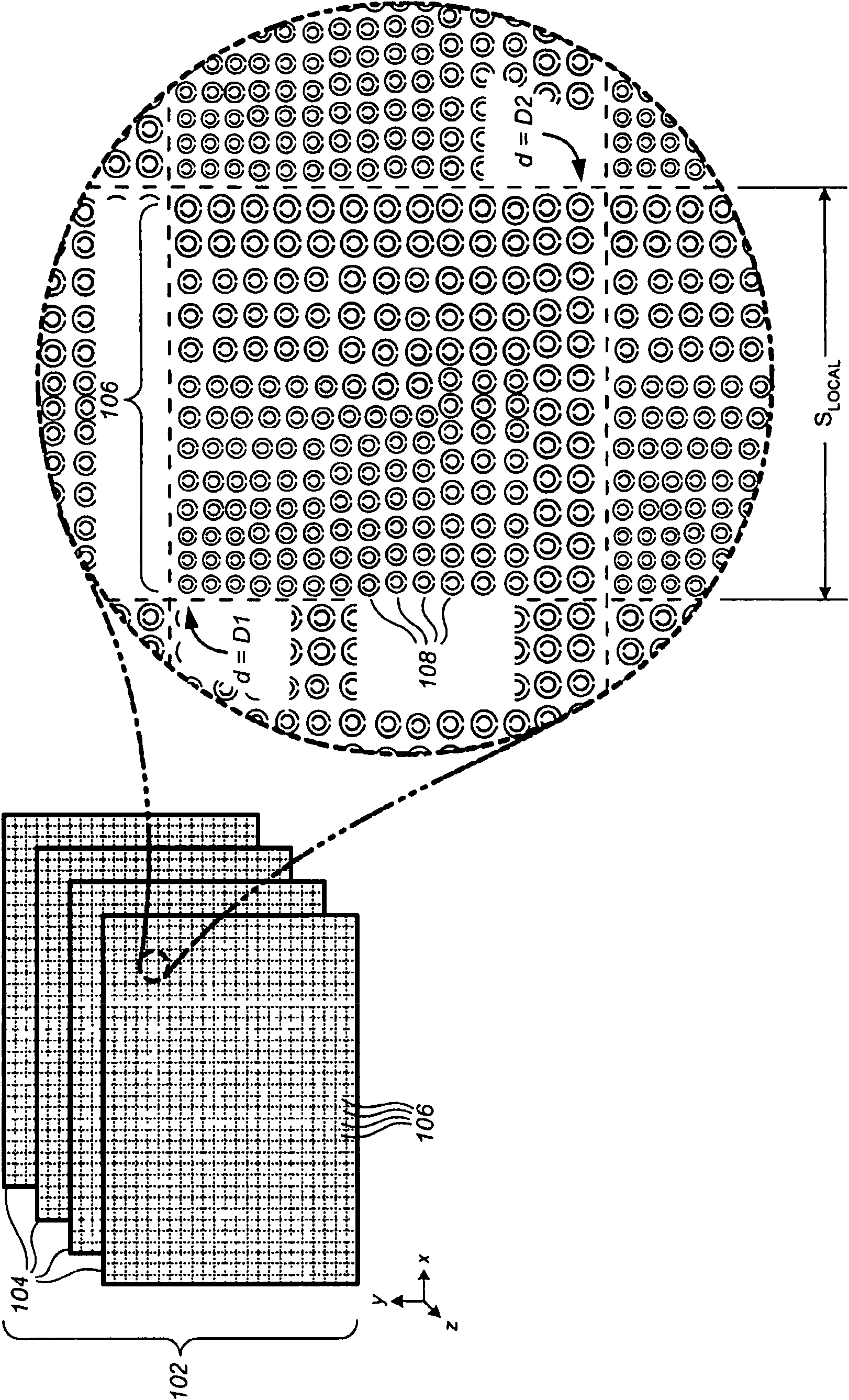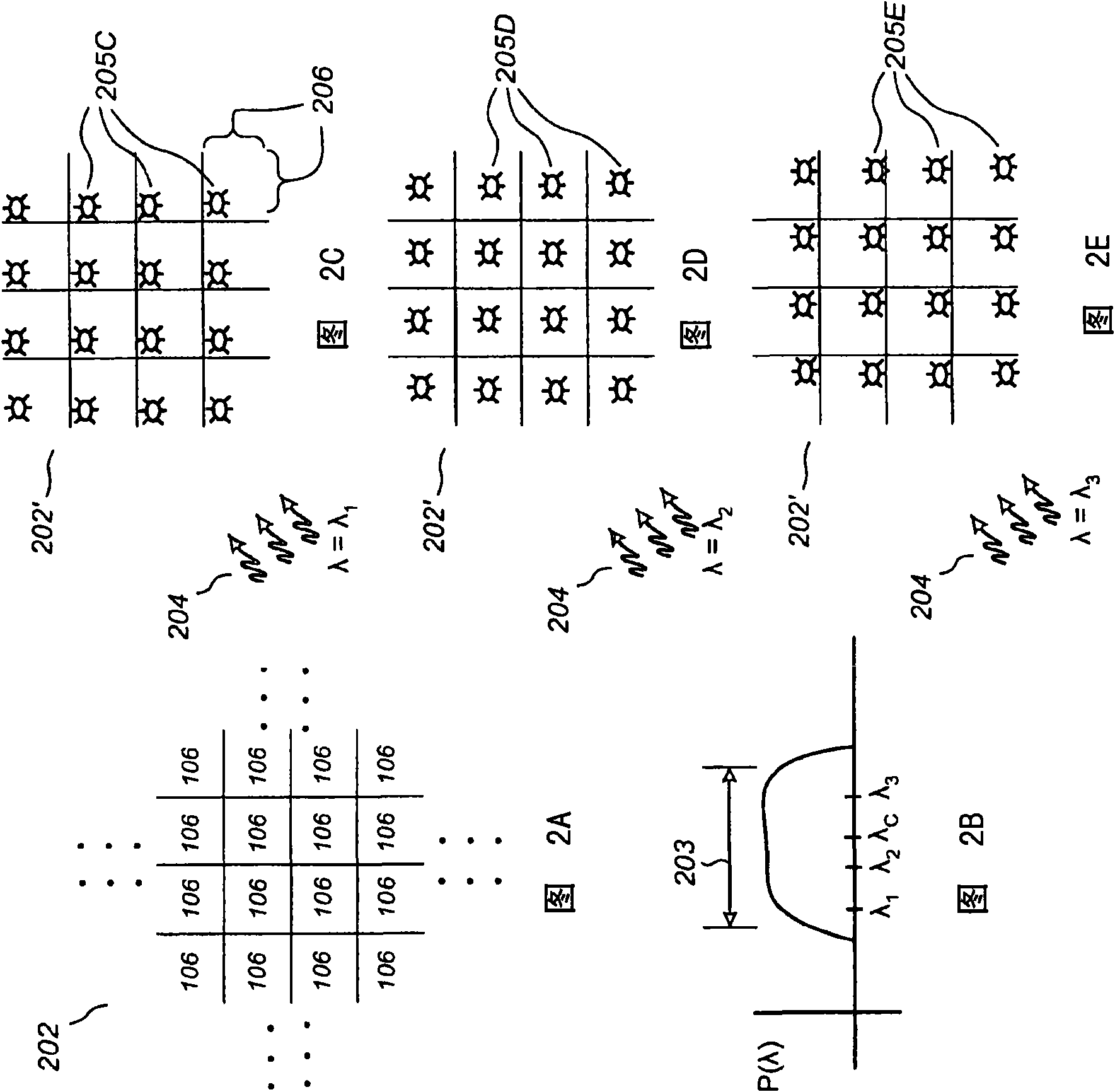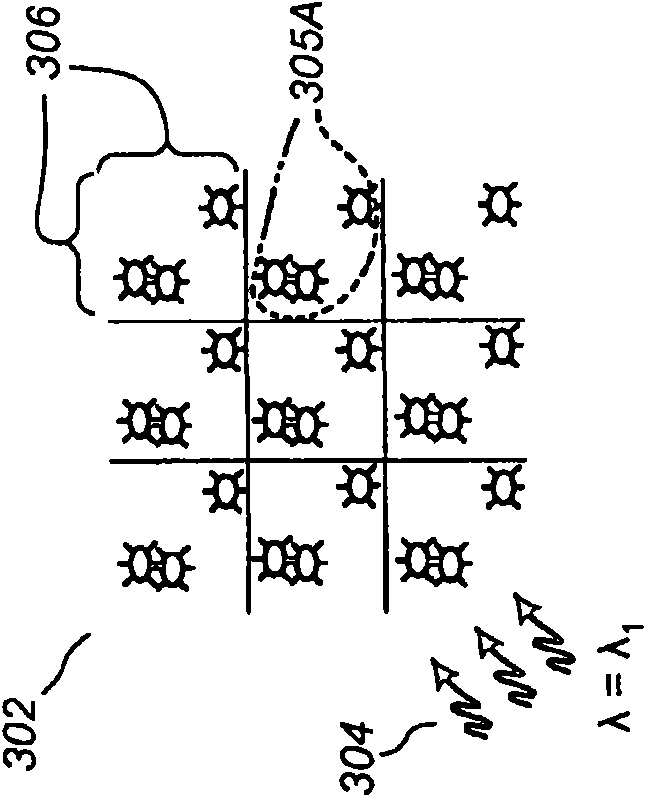Composite material with chirped resonant cells
A resonant unit, composite material technology, used in antennas, electrical components, leaky waveguide antennas, etc.
- Summary
- Abstract
- Description
- Claims
- Application Information
AI Technical Summary
Problems solved by technology
Method used
Image
Examples
Embodiment Construction
[0016] figure 1 A composite material 102 is shown according to an embodiment. Composite material 102 includes at least one surface 104 capable of receiving incident electromagnetic radiation. The surface 104 typically includes a dielectric substrate such as silicon, although any of a variety of different dielectric materials may be used. By way of example and not limitation, the incident electromagnetic radiation may originate from figure 1 The positive-Z side of the composite material 102 generally propagates in the negative-Z direction and has a wave normal at any of various angles relative to the z-axis.
[0017] The composite material 102 comprises a plurality of local resonant element groups 106 spatially arranged on said surface 104 . Each group of local resonant elements 106 includes a plurality of electromagnetically reactive or resonant elements 108 relative to the wavelength of the incident electromagnetic radiation for which they are to exhibit a negative effecti...
PUM
 Login to View More
Login to View More Abstract
Description
Claims
Application Information
 Login to View More
Login to View More - R&D
- Intellectual Property
- Life Sciences
- Materials
- Tech Scout
- Unparalleled Data Quality
- Higher Quality Content
- 60% Fewer Hallucinations
Browse by: Latest US Patents, China's latest patents, Technical Efficacy Thesaurus, Application Domain, Technology Topic, Popular Technical Reports.
© 2025 PatSnap. All rights reserved.Legal|Privacy policy|Modern Slavery Act Transparency Statement|Sitemap|About US| Contact US: help@patsnap.com



